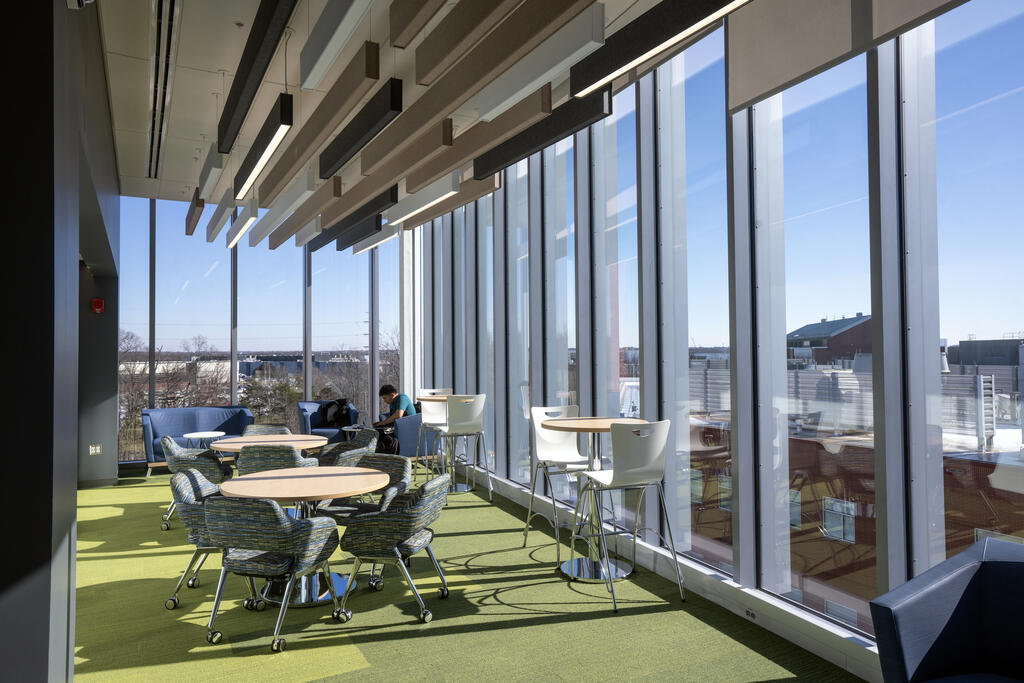Admission CTAs
Dean’s Blog: The end is just the beginning
I have been fascinated by our Forensic Science Program at George Mason since the first day I became dean nearly four years ago. As a “kid of the 1970s” with parents who relied on television to entertain (or calm down) their children, I grew up watching most police shows of the time (Starsky & Hutch, Kojak, Baretta, Policewoman, and many others). This taste for TV shows never went away for me and it remains today. Perhaps the CSI series is my favorite of all time. I have been thrilled to be part of a science community that includes forensic science, particularly with all that we have to offer.
Having said this, it has taken significant time and energy to implement our Forensic Science Program’s vision (this is not TV!)—to bring in the right people, cultivate the right partnerships, build innovative curriculum that encompasses all phases of the discipline, establish and execute an unparalleled facilities plan to provide an unmatched learning environment for our forensic science students at Mason.
And this past week, the team reached a major program milestone. Congratulations to our forensic science experts, led by illustrious former FBI profiler, Mary Ellen O’Toole who, after years of careful planning and coordination, accepted our first two donors to Mason's outdoor Forensic Science Research and Training Laboratory (FSRTL). One of only a few similar facilities in the United States, this immersive laboratory allows our students, multidisciplinary faculty, and community collaborators to better examine and understand crime scene attributes in an outdoor environment. To put this in perspective, what follows is Mary Ellen's speech from that morning shared with a group of observers just before the implementation team incorporated the two brave donors into the FSRTL learning environment.
“I want to take a few minutes to thank our donors and their families for their remarkable and selfless gifts of their bodies to our Forensic Science Training and Research laboratory. A gift like this is priceless and will impact and influence the science of locating and identifying human remains and solving homicides for years to come.
Everyone wants to make a difference in this life, and certainly our first donors have done so, even at the hour of their deaths. Because of these selfless individuals and their families, we can now move forward with the mission of this outdoor Science Laboratory, to study human decomposition from a multidisciplinary perspective, and to learn how to more quickly identify and recover human remains, and bring better science into the courtroom through human, canine, and insect research.Some may say this is a gruesome science, but it is really a life-giving science. By doing all of this, we can save lives by identifying and prosecuting those guilty persons responsible for the premature deaths / murders of loved ones, who have been left in outdoor crime scenes or in clandestine graves - some of which have never been found and sadly lost for all time …. The gift of these donors today will enable us to find ways to locate missing and unidentified persons and return them to their loved ones. There is no more generous gift to science than this.
May we come together today as scientists, practitioners, law enforcement, and forensic science students and express our admiration and gratefulness to these brave two donors and their families, and may we quietly and with the utmost respect, say the following words:
With peace and gratitude and dignity, we thank you both for the people you were and the memories in science you will always be.”
We truly appreciate the trust and support these donors and their loved ones placed in our forensic scientists and our program.
Getting to this point was quite a multidisciplinary effort. Whether it was the specialized outdoor equipment constructed by George Mason facilities, the collaboration with George Mason’s Risk and Emergency Management team, the Greenhouses, botanists, and beekeepers, the drone experts assessing the crime scene from above, the Systems Biology scientists helping to analyze samples from the bees as they occupy their five mile ‘fly zone’ within the FSRTL, or the many governmental and law enforcement professionals and their cadaver dogs who will train at these integrated research facilities, we look forward with excitement to the expanding role this now fully operational outdoor research facility will have.
In the coming academic year, our Forensic Science program laboratories and classrooms will occupy their portion of the new Life Sciences and Engineering Building on George Mason’s Science and Technology Campus in Manassas, VA.
It’s a new day and a new chapter for the forensic science program and for our college. And we look forward to continuing to enhance the student learning experience through innovative partnerships,and extensive collaboration, and new ideas such as these. I can’t be more thrilled when I consider this college’s bright future ahead.
